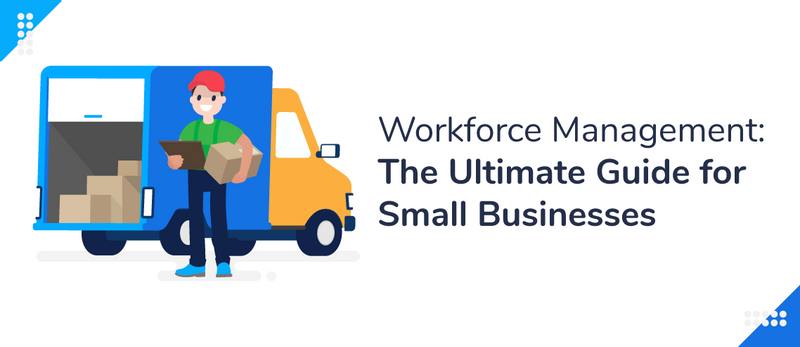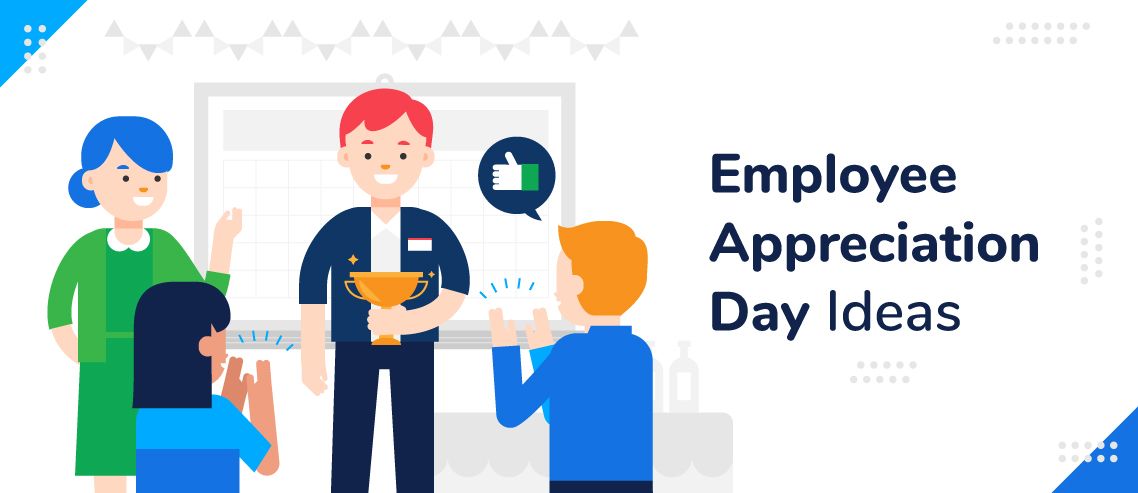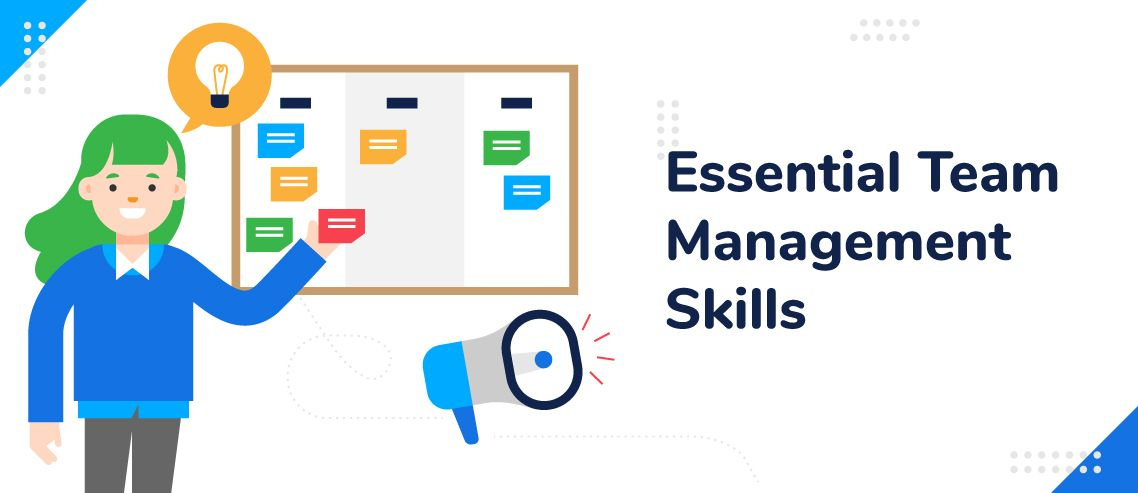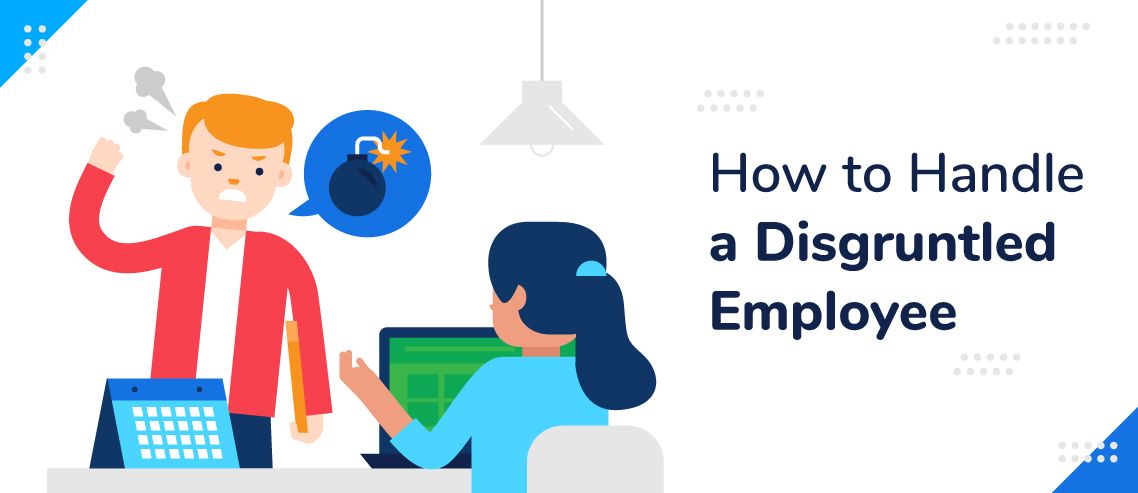Workforce Management: The Ultimate Guide for Small Businesses

According to McKinsey’s research, productivity is slowly declining in the United States. Some possible causes include mis-measurement of productivity, slowing technological innovation, shifts in employment from manufacturing to service industries, and lack of capital access.
The list of possible reasons is infinite and seemingly out of your direct control.
Naturally, a less productive workforce will affect your bottom line. When work quality or efficiency suffers, it means tasks take longer and require more money. It may also increase your organization’s susceptibility to risk.
So, what can you do about it?
For starters, you can implement workforce management solutions. Here’s an ultimate guide to workforce management for small businesses.
What is Workforce Management?
Workforce management is a set of interrelated activities and processes that a business uses to plan, measure, and improve the productivity of its workforce.
Put simply, workforce management is the day-to-day things a company does to ensure their employees have the tools, knowledge, and support to be successful. It’s the intangible stuff companies do like setting a budget, ensuring everyone’s showing up on time, and measuring performance to find coaching opportunities.
In essence, workforce management gives you control over things you thought were uncontrollable — your people. Sure, you can hire more thoughtfully or pay them more, but it won’t guarantee successful outcomes. Only through proper management and direction can you get closer to your goals.
The Benefits of Efficient Workforce Management
It’s the little details that add up to something big. When everyone shows up on time, feels empowered to do their best work, and are happy, then good things tend to happen. Efficiency and morale go up, costs go down, and your business begins to thrive. Workforce management enables all of that.
It does so by giving you the insights needed to make better decisions. Effective workplace management makes it easier to recruit and retain highly talented people because you have a better understanding of what to look for in a candidate. It’ll also help you streamline the employee onboarding process, which enhances your ability to set expectations and promote familiarity with new processes and systems early on.
Workforce management enhances your people development process. You’ll find it’s easier to spot coaching opportunities, conduct performance reviews, and provide employee performance reports to senior management.
How Does Workforce Management Work?
Now that we’ve established a baseline understanding of workforce management and its many benefits, it’s time we get into the nitty-gritty details of how it actually works:
1. Budgeting
Matching the right mix of resources, employees, and technology comes down to accurate budgeting and forecasting. Done correctly, and you’ll find extra funds for new and exciting projects or even afford to pay your employees more, which will boost retention and, ultimately, client satisfaction. In action, budgeting for workforce management could mean crunching the numbers to ensure you’re properly staffed for the busy season.
2. Scheduling
A major part of workforce management is ensuring the right people are at the right place at the right time. Any disruption here could mean delays in production, delivery, or poor customer service. All of which add up and can hurt your business’s reputation. A tool like ZoomShfit helps tremendously with scheduling because you can create templates for scheduling and see conflicts in real-time, which helps you make more informed decisions.
3. Time Management
Scheduling is like forecasting for workforce management, but at its core, a schedule is a dream scenario. People will call in sick, show up late, leave early, swap shifts, get hurt, or even quit.
Timekeeping and attendance tracking compares your forecast to reality. It helps you eliminate blind spots, make on-the-spot decisions, and detect coaching opportunities. Here’s yet another area where a solution like ZoomShift comes in handy since you get real-time reports of employee attendance.
4. Employee Performance
Even if you have the right people at the right place and at the right time, it doesn’t mean they’ll perform to standard. There’s a variety of factors that can dictate performance, and workforce management helps you keep tabs on a majority of them.
5. Employee Satisfaction
Identifying your top performers and your reliable employees is vital to sustaining your current levels of output and raising the bar to meet your quarterly goals. People are your greatest asset, and ensuring their satisfaction should be a top priority.

What is Workforce Management Software?
In technical terms, workforce management software (WMS) is a digital solution that supports the day-to-day operations of an organization through a variety of factors ranging from employee scheduling and task management to performance management.
In plain terms, workforce management software is a tool that ensures your employees are where they need to be at all times and that they have the support, tools, knowledge, and guidance they need to help your small business achieve its goals.
Without workforce management software, you’ll likely have to cobble together a few software systems to achieve the same result, which is expensive, time-consuming, and inefficient. With a centralized solution, you can ensure everyone’s on the same page at all times and have the confidence knowing that you have hard data at your fingertips that’ll help you make more informed decisions about your business and its employees.
What to Look for in a Workforce Management Software
There are plenty of workforce management tools available, but finding one that fits your unique needs can be a struggle. Here’s a shortlist of what to look for to get you started:
1. The Right Mix of Simplicity and Features
Only you’ll know what features are a deal-breaker or deal maker, and doing your homework before you start shopping helps a ton. The last thing you want is to overpay for features you won’t use. Also, even the best software is useless if it’s too complicated for your employees to learn. The best way to do this is by comparing your list of features to the software providers, asking a lot of questions, and going through a thorough demo if possible. Reviews can be helpful also but read them with a grain of salt.
2. Streamlined Communication and Mobility
The importance of communication can’t be understated when it comes to picking a workforce management tool. Ideally, you’d have one that allows for internal messaging, tagging, and provides context and relevance to the conversation.
It should help you reduce the need to send out massive email threads and hold unnecessary meetings. Here in the 21st century, it’s unacceptable if they don’t have a fully functional mobile app, so ensure you don’t skip over that crucial detail.
3. Automation Rich
Modern technology makes life so much easier, and the workplace shouldn’t be any different. The software you choose should feel easy, but also actively take work off your plate as well. Automation reduces the need for unnecessary admin work, manual entry, and as a result, reduces human error, which saves you money.
4. Reporting
It’s hard to deny that one of the greatest benefits to workforce management is the ability to make more informed decisions. With the right data at the right time, you can improve your customer’s experience, prevent burnout, or even cut unnecessary costs.
5. Robust Scheduling and Time Tracking Built-In
Ideally, your workforce management solution of choice has built-in scheduling, so you can ensure you always have the right amount of people to get the job done. Software like ZoomShift makes it easy to make your weekly schedule in a matter of minutes, thanks to its templates and drag-and-drop scheduling features. It also shows you in real-time how much the labor will cost you and makes it incredibly easy to swap shifts if and when the need arises.
Summary
Inefficiency across your business wastes time, increases risk, diminishes work quality, and costs you money. More importantly, it prevents you from hitting your strategic goals. The key to getting a grip on all these key details comes down to proper planning and workforce management.
If you’re ready to see the difference for yourself, then start your free trial with ZoomShift today.
JD enjoys teaching people how to use ZoomShift to save time spent on scheduling. He’s curious, likes learning new things everyday and playing the guitar (although it’s a work in progress).



